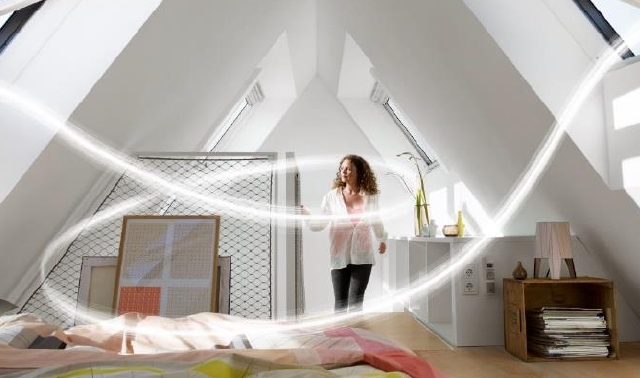Why does condensation occur on skylights?
Condensation is a natural phenomenon and not a product defect. This is a sign of increased humidity, which means that ventilation of the room is necessary. On average, a family of four people produces about 10-15 liters of water vapor per day when cooking, taking a shower, drying clothes, etc. Water vapor does not disappear anywhere, it is necessary to ventilate it to avoid that
they could remain in the building. Ventilation is required to actively reduce the amount of vapor. Even in autumn and winter, when all doors and windows are kept closed, the best way to release water vapor is to open at least two windows, each on a different side, and ventilate the house for 5-10 min. 4 times a day.
It must be recognized that the way modern buildings are constructed with strong thermal insulation contributes to this phenomenon. Windows and doors in new buildings are almost completely hermetically sealed. Which is good for energy consumption, but does not ensure a healthy indoor climate. There is insufficient air exchange in the building. Its lack in combination with high humidity can
cause mold, damage to the house and over time aggravate various diseases for its residents. Therefore, the ventilation of the new and renovated building must be designed differently than in the old buildings.
Condensation on skylights forms when moist air cools. Air contains lower levels of moisture at low temperatures. When the air warms, it becomes humid and water is produced. In this way, plan
condensation forms in the water layer. This is especially noticeable on cold, smooth surfaces, such as mirrors, tiles
and also skylights. Condensation on the window has increased
humidity indicator in the room. With a good and healthy indoor climate, condensation will rarely be observed.
Why do skylights dew?
Window panes are usually the coldest surfaces in a room. Even with the most energy-efficient glazing, condensation first becomes visible on the glass, despite the thermal insulation values. This is an indication of excessive humidity or a poor indoor climate that is unhealthy. Inner glass: In today's focus on heating costs, it's easy to forget the importance of fresh air in maintaining a healthy indoor climate. If the house is not sufficiently ventilated during the day, there is no air exchange and humidity can increase. This is especially noticeable in new and renovated buildings.





